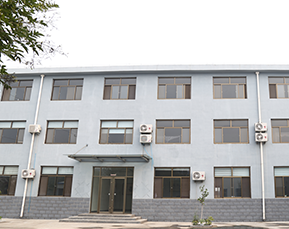 Afrikaans
Afrikaans  Albanian
Albanian  Amharic
Amharic  Arabic
Arabic  Armenian
Armenian  Azerbaijani
Azerbaijani  Basque
Basque  Belarusian
Belarusian  Bengali
Bengali  Bosnian
Bosnian  Bulgarian
Bulgarian  Catalan
Catalan  Cebuano
Cebuano  Corsican
Corsican  Croatian
Croatian  Czech
Czech  Danish
Danish  Dutch
Dutch  English
English  Esperanto
Esperanto  Estonian
Estonian  Finnish
Finnish  French
French  Frisian
Frisian  Galician
Galician  Georgian
Georgian  German
German  Greek
Greek  Gujarati
Gujarati  Haitian Creole
Haitian Creole  hausa
hausa  hawaiian
hawaiian  Hebrew
Hebrew  Hindi
Hindi  Miao
Miao  Hungarian
Hungarian  Icelandic
Icelandic  igbo
igbo  Indonesian
Indonesian  irish
irish  Italian
Italian  Japanese
Japanese  Javanese
Javanese  Kannada
Kannada  kazakh
kazakh  Khmer
Khmer  Rwandese
Rwandese  Korean
Korean  Kurdish
Kurdish  Kyrgyz
Kyrgyz  Lao
Lao  Latin
Latin  Latvian
Latvian  Lithuanian
Lithuanian  Luxembourgish
Luxembourgish  Macedonian
Macedonian  Malgashi
Malgashi  Malay
Malay  Malayalam
Malayalam  Maltese
Maltese  Maori
Maori  Marathi
Marathi  Mongolian
Mongolian  Myanmar
Myanmar  Nepali
Nepali  Norwegian
Norwegian  Norwegian
Norwegian  Occitan
Occitan  Pashto
Pashto  Persian
Persian  Polish
Polish  Portuguese
Portuguese  Punjabi
Punjabi  Romanian
Romanian  Russian
Russian  Samoan
Samoan  Scottish Gaelic
Scottish Gaelic  Serbian
Serbian  Sesotho
Sesotho  Shona
Shona  Sindhi
Sindhi  Sinhala
Sinhala  Slovak
Slovak  Slovenian
Slovenian  Somali
Somali  Spanish
Spanish  Sundanese
Sundanese  Swahili
Swahili  Swedish
Swedish  Tagalog
Tagalog  Tajik
Tajik  Tamil
Tamil  Tatar
Tatar  Telugu
Telugu  Thai
Thai  Turkish
Turkish  Turkmen
Turkmen  Ukrainian
Ukrainian  Urdu
Urdu  Uighur
Uighur  Uzbek
Uzbek  Vietnamese
Vietnamese  Welsh
Welsh  Bantu
Bantu  Yiddish
Yiddish  Yoruba
Yoruba  Zulu
Zulu conveyor belt scraper types
Conveyor Belt Scraper Types An Essential Component for Efficient Material Handling
Conveyor belts are critical in various industries, from mining to food processing, facilitating the efficient movement of materials. However, maintaining the cleanliness and functionality of these belts is essential to ensure optimal performance and prevent system failures. One of the key components in achieving this is the conveyor belt scraper, designed to remove contaminants from the belt surface. In this article, we'll explore the different types of conveyor belt scrapers and their specific applications.
1. Primary Scrapers
Primary scrapers are typically installed at the discharge end of the conveyor belt. Their primary function is to remove the bulk of the material that adheres to the belt after unloading. These scrapers are robust and designed to handle significant wear and tear, made from durable materials such as polyurethane or metal. They come in various designs, including fixed, adjustable, or spring-mounted, allowing for flexibility based on the operational needs.
Secondary scrapers work in conjunction with primary scrapers, providing an additional layer of cleaning. Usually positioned just after the primary scraper, these devices aim to eliminate any residual material left on the conveyor belt. Secondary scrapers often feature more delicate materials that can effectively remove finer particles without damaging the belt surface. This is crucial in applications where product contamination must be minimized, such as in the food industry.
3. Tertiary Scrapers
conveyor belt scraper types

Tertiary scrapers are less common but serve important roles in certain applications. Typically used in high-precision environments, such as pharmaceutical manufacturing or packaging, they provide an extra level of cleaning to ensure that no contaminants remain on the belt. These scrapers often utilize advanced materials and designs to ensure they do not interfere with the belt operation while maintaining superior cleaning capabilities.
4. Impact Scrapers
Impact scrapers are designed to handle the conditions where materials are loaded with high impact. Positioned at the loading point, these scrapers use a rugged design to withstand the force from the materials and effectively dislodge debris from the belt. They play a vital role in preventing carryback, thereby reducing the frequency of maintenance and prolonging the life of the conveyor system.
5. Cleaning Systems
In addition to traditional scrapers, many companies are now incorporating automated cleaning systems. These systems can include water sprays, air jets, or even integrated brush systems, which work alongside scrapers to enhance the cleaning process. This combination can drastically reduce contamination, decrease maintenance needs, and improve overall safety.
Conclusion
Choosing the right type of conveyor belt scraper is fundamental for ensuring efficient operation and longevity of conveyor systems. Understanding the different types—primary, secondary, tertiary, impact scrapers, and advanced cleaning systems—can help industries monitor their material handling processes better. By maintaining a clean conveyor belt, businesses can improve productivity, decrease downtime, and ensure the quality of the products being processed.
-
Revolutionizing Conveyor Reliability with Advanced Rubber Lagging PulleysNewsJul.22,2025
-
Powering Precision and Durability with Expert Manufacturers of Conveyor ComponentsNewsJul.22,2025
-
Optimizing Conveyor Systems with Advanced Conveyor AccessoriesNewsJul.22,2025
-
Maximize Conveyor Efficiency with Quality Conveyor Idler PulleysNewsJul.22,2025
-
Future-Proof Your Conveyor System with High-Performance Polyurethane RollerNewsJul.22,2025
-
Driving Efficiency Forward with Quality Idlers and RollersNewsJul.22,2025





























